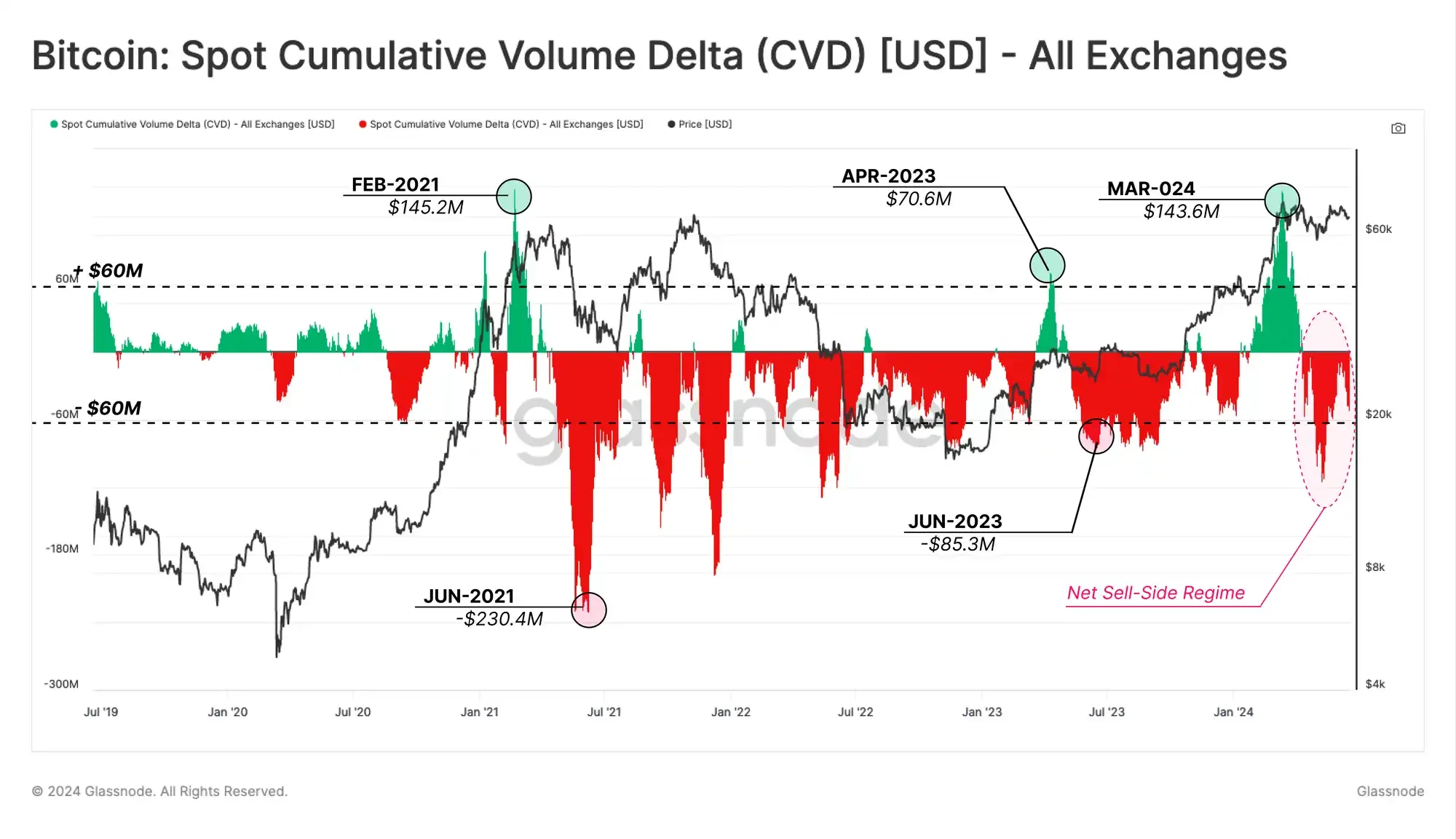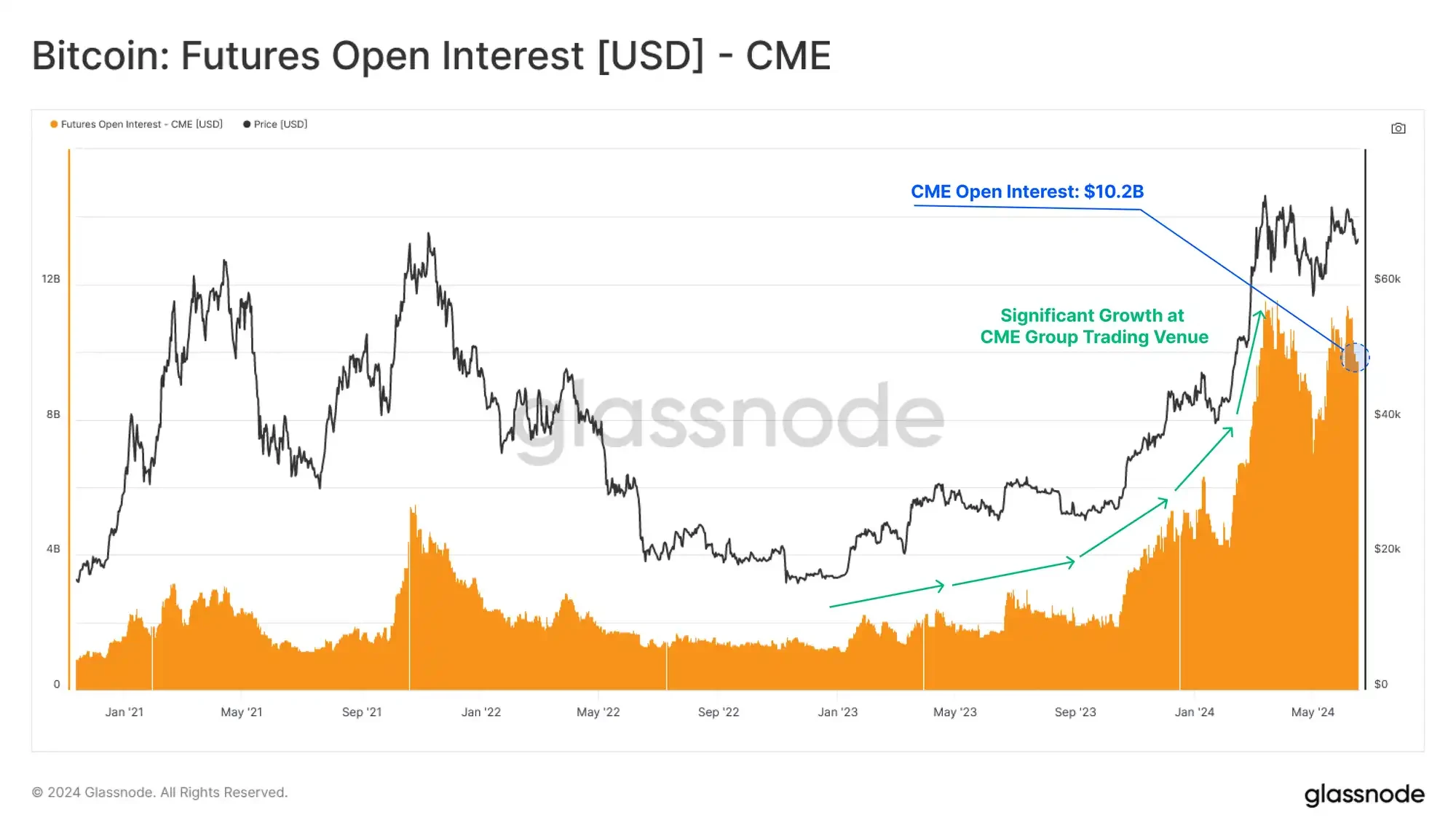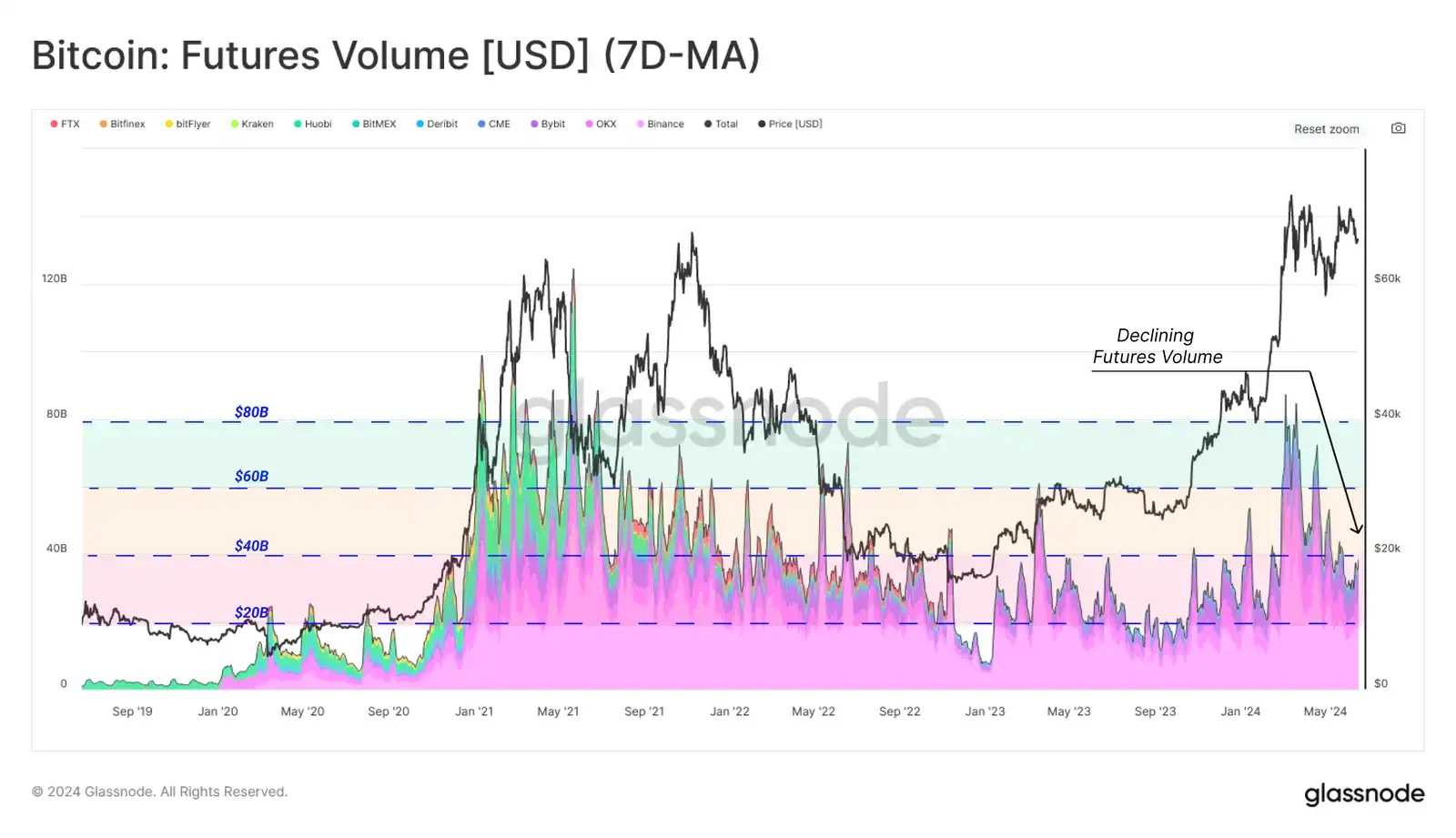Original author: UkuriaOC, CryptoVizArt, Glassnode
Original translation: Tao Zhu, Golden Finance
Summary:
Despite chaotic price action, investor profitability remains strong, with the average unrealized profit per coin being around 120%.
The demand side is sufficient to absorb sell-side pressure and HODLer withdrawals, but not sufficient to promote further upward growth.
Spot and carry trading continues, especially with an increase in institutional traders, which temporarily strengthens expectations of range-bound trading.
Market profitability remains strong
Sideways price action often signals investor boredom and apathy, which appears to be the dominant reaction across all Bitcoin markets. BTC prices are consolidating within a mature trading range. Investors remain in a generally favorable position, with over 87% of the circulating supply in profit and a cost basis below the spot price.

Using the MVRV indicator, we can assess the size of unrealized profits held by the average investor.
Currently, the unrealized profit of common tokens is around +120%, which is typical when the market is trading near the ATH of the previous cycle. The MVRV ratio remains above its yearly baseline, indicating that the macro uptrend remains intact.

We can use the MVRV ratio to define pricing ranges to assess extreme deviations of investor profitability relative to the long-term average. Historically, breaches of 1 standard deviation have coincided with long-term macro tops.
Currently, BTC price is stabilizing and consolidating within a 0.5 to 1 standard deviation range. This once again highlights that despite the recent volatile market conditions, the average investor is still holding statistically high profits.

When the market decisively broke through the 2021 ATH, there was a large amount of investor allocation, mainly driven by the long-term holder group. This reflected significant profits, which helped increase active trading and liquidity supply.
Typically, after a new ATH, the market takes ample time to consolidate and digest the excess supply introduced. This results in a decline in realized profits and seller pressure as equilibrium is established.
A reduction in seller pressure and profit-taking will naturally reduce market resistance. Nevertheless, BTC price has been unable to maintain significant upward momentum since its ATH in March. This suggests that while the demand side is stable enough to keep the market range-bound, it is ultimately not growing enough to re-establish upward momentum.

Low trading volume
Despite healthy investor profitability, the volume of transactions processed and transferred on the Bitcoin network has fallen sharply after hitting a record high, highlighting waning speculative appetite and growing market indecision.
A similar pattern can be observed when evaluating spot trading volumes across major centralized exchanges, which shows a strong correlation between on-chain network settlement volume and trading volume, reflecting investor fatigue.

Exchange activity has dropped significantly
Going one level deeper, we can examine on-chain inflows to exchanges denominated in BTC, and again we notice a significant drop in activity.
Currently, short-term holders are sending about 17,400 BTC per day to exchanges. However, this is significantly lower than the peak of 55,000 BTC/day recorded when the market reached a high of $73,000 in March, when speculation levels became excessive. Conversely, inflows from long-term holders to exchanges are relatively low, currently accounting for a negligible inflow of only 1000+ BTC per day.

We can visually see the sharp drop in LTH investor activity by the percentage of long-term holder balances sent to exchanges.
LTH sent less than 0.006% of its total holdings to exchanges, suggesting that the group has reached equilibrium and that higher or lower prices are needed to stimulate further action.

Currently, there are more profitable (11,000 BTC) token transfers than losing (8,200 BTC) token transfers. This suggests that, albeit by a relatively small amount, there is still an overall trend towards profit taking.

Currently, the average token sent to the exchange realizes a profit of approximately +$55,000 and a loss of -$735, respectively. This makes the average profit 7.5 times higher than the loss, with only 14.5% of trading days recording a higher ratio.
This means that HODLers are still withdrawing funds and the demand is enough to absorb the selling pressure, but not enough to push the market price higher. This shows that the market structure is more favorable for range traders and arbitrage strategies rather than directional and trend trading strategies.

Cash and carry basis trading
Another tool that allows us to describe the spot market is the spot cumulative volume delta (CVD). This metric describes the net deviation of market taker buys from sells, measured in USD.
Currently, a net seller bias dominates the spot market, but the market continues to trend sideways. This is consistent with the above view that the demand side is roughly equivalent to the selling pressure, keeping the market range-bound.

When assessing the futures market, we note that open interest continues to rise and currently stands at over $30 billion, just below previous highs. However, as highlighted in WoC-23, a large portion of this open interest is related to market-neutral spot and carry trades.
In a range-bound market, an increase in open interest could mean a rise in volatility-capturing strategies as traders can extract premiums from perpetual swaps, futures, and options markets.
CME’s open interest has grown significantly, highlighting the growing participation of institutional investors. CME now holds more than $10 billion in open interest, accounting for nearly one-third of the global market share.

In stark contrast to the increase in open interest, futures volumes have seen a similar decline as the spot market and on-chain transfers. This suggests that speculative interest is relatively low, while fixed basis trades and arbitrage positions dominate.

Summarize
Despite the volatility, the average Bitcoin investor has remained largely profitable. However, investor discretion has declined, and trading volumes in spot and derivative markets, as well as on-chain settlement, have shrunk.
Demand and sellers appear to have established a balance, resulting in relatively stable prices and significantly lower volatility. The stagnation of market movement has led to a certain degree of boredom, apathy and indecision among investors. Historically, this has shown that a decisive price movement in either direction is necessary to stimulate the next round of market activity.










